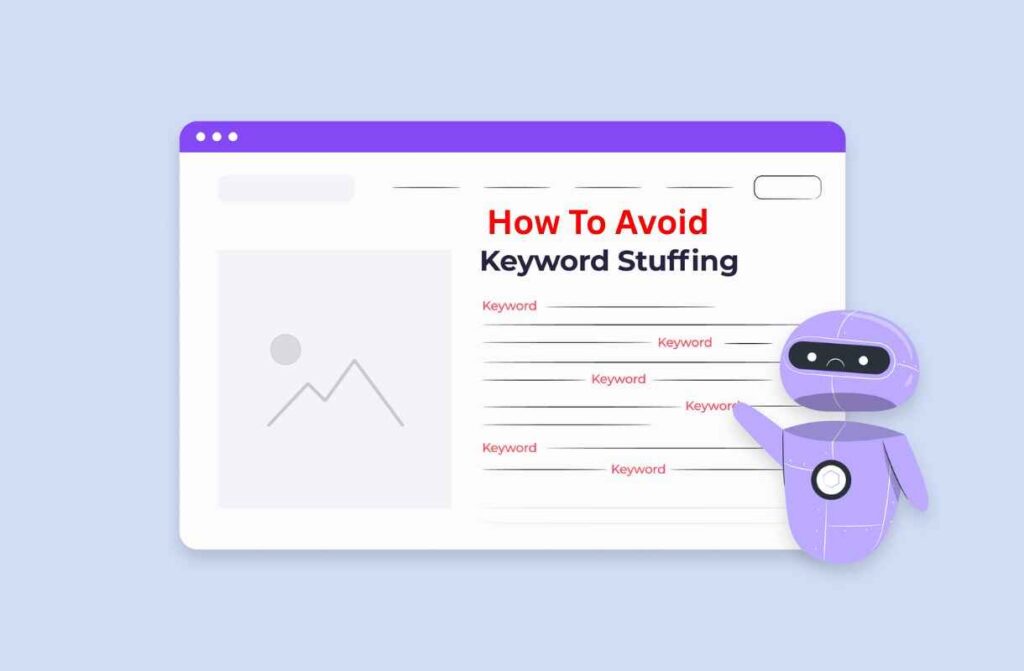To avoid keyword stuffing, write naturally for readers instead of focusing on keyword count. Use related words and different variations to cover the topic. Add your main keyword in key places, such as the title, H1, and meta description, while maintaining a smooth and natural writing style.
Keyword stuffing in SEO can severely damage your entire website’s authority and trust. If you write content with good intentions but overuse keywords, it may have unintended consequences. Fortunately, avoiding keyword stuffing is not difficult it just requires a thoughtful approach. Here is how to create content that ranks well without overloading it with keywords.
1. Focus on User Intent First
First, understand what people really want when they search your keyword. They are likely looking for information, a product, a comparison, or a guide. Once you know their intent, write content that helps them. When your content meets their needs, then you will naturally use the right keywords without forcing them.
2. Use Synonyms and Related Phrases
Instead of repeating the same keyword, use synonyms and LSI (Latent Semantic Indexing) keywords. These are phrases that search engines recognize as being related to your main topic.
For example:
Instead of repeating “best running shoes” over and over, try using:
top athletic shoes
sneakers for running
best jogging footwear
It enhances readability and enables search engines to comprehend the actual context better.
3. Keep Keyword Density Under Control
There is no exact perfect percentage recommended by Google search engine but a safe rule is to keep your primary keyword usage between 1% to 2% of the total word count.
Here is a quick guideline:
For a 1,000 No. of words in the article use your primary keyword around 5 to 7 times.
Use your main keyword naturally throughout the content and don’t repeat it too much in one place.
Utilize SEO Tools like Yoast SEO, RankMath, or Surfer SEO to monitor keyword density and ensure you are not overusing them.
4. Write for Humans, Not Search Engines
If your sentence sounds awkward or unnatural because you tried to squeeze in a keyword, use a rewriter tool to rewrite it.
For example:
Bad: “The best electric cars are the best cars for commuting because electric cars are fast.”
Better: “Electric cars are ideal for commuting thanks to their speed and convenience.”
5. Use Keywords Strategically (Not Excessively)
You only need to place your keyword in key spots to help search engines understand your content. These strategic locations are discussed below:
Page title, it is also called (H1)
Subheadings (H2, H3 or H4)
First 100 words
Meta title and Meta description
Image alt tags (Relevant Images)
In URL (slug)
No need to repeat the primary keyword multiple times throughout the body text.
6. Avoid Keyword-Stuffed Anchor Text
When adding internal or external links, avoid using exact-match keywords every time. Use secondary keywords or different variations as anchor text. This process helps maintain a natural and effective link profile.
Bad example:
Learn more about affordable SEO services by clicking this affordable SEO services link.
Better example:
Learn more about our SEO solutions for small businesses.
7. Use of Long Tail Keywords
Using long-tail keywords for SEO instead of repeating your main keyword makes your content sound natural and easy to read. These longer phrases match what people really search for and help your page rank better. This method avoids keyword stuffing, keeping your writing smooth and high-quality. It also makes your content more helpful and genuine for both readers and search engines.
8. Use Content Structure to Break Things Up
When your content is well-organized with:
Proper headings
Bullet points
Short paragraphs
Visuals (Pictures, Videos or GIFs)
It is easier to naturally incorporate keywords without overusing them. Well-structured content allows room to cover subtopics which gives you the chance to include variations of your keywords without keyword stuffing.
9. Update the Over-Optimized Old Content
If your old content contains too many repeated keywords, it can negatively impact your website’s ranking. Read your articles and remove extra or forced keywords. Write in a natural, simple way that’s easy to understand.
Add useful and updated information instead of repeating the exact words. This makes your content better for readers and helps search engines trust your site more. Clean, natural content consistently outperforms keyword-stuffed text.
Search engines prefer the latest, updated, and high-quality content. Cleaning up old posts can boost rankings.
Bad Example:
Best Hotels in 2023
Good Example:
Best Hotels in 2025
10. Use a Content Optimization Tool
SEO tools can help flag keyword stuffing before you publish. Tools like:
- Frase
- Surfer SEO
- ClearScope
- SEOToolzz
Analyze your content against top-ranking pages and provide suggestions on keyword usage, tone, readability, and other key aspects of keyword ranking to enhance your content.
11. Trust Natural Language and Topic Depth
You will naturally use enough relevant terms to achieve a high ranking if your content is in-depth, well-written, and satisfies the search query.
Rather than stuffing one keyword, aim to cover the topic comprehensively. Google is smart enough to understand context and reward rich content.
